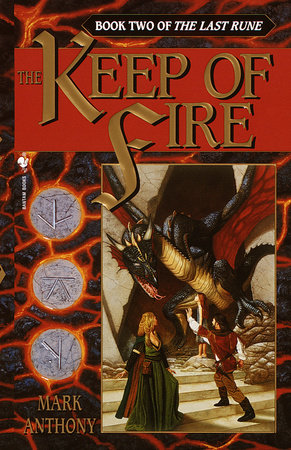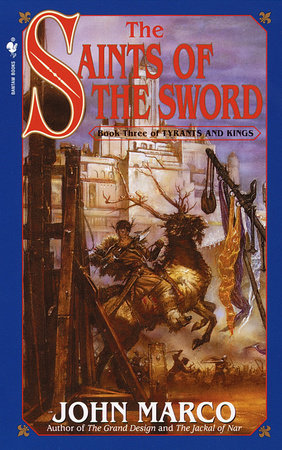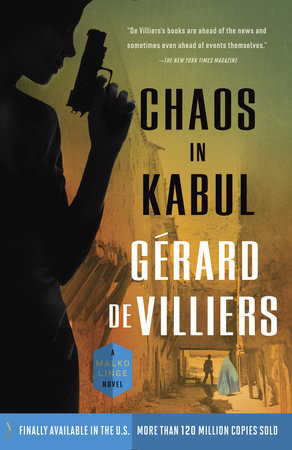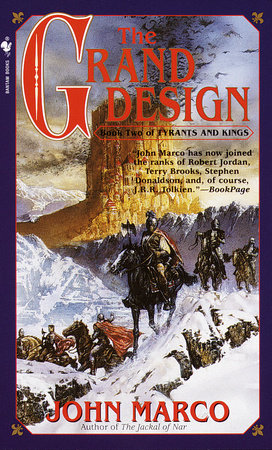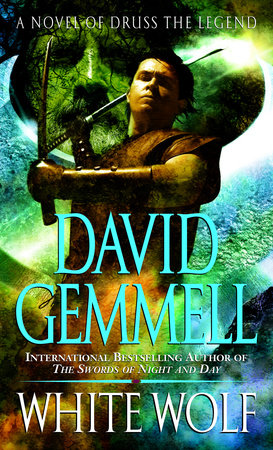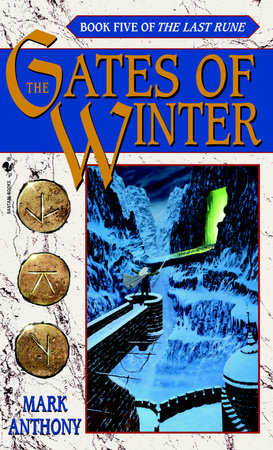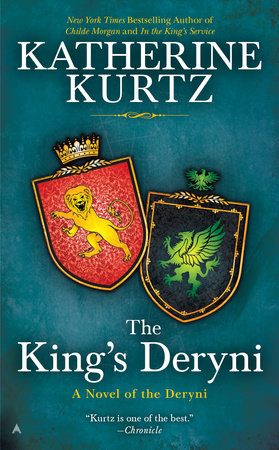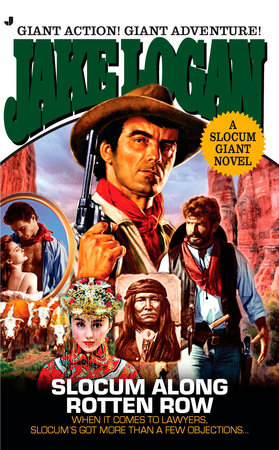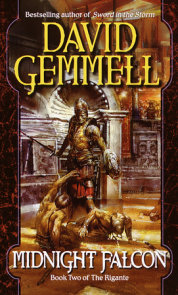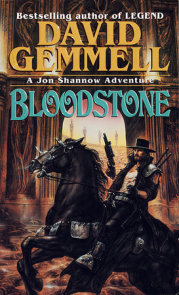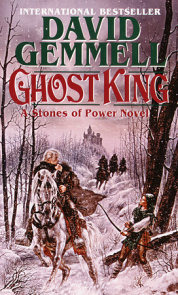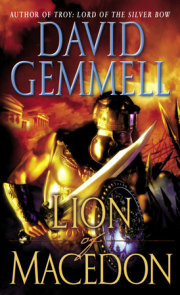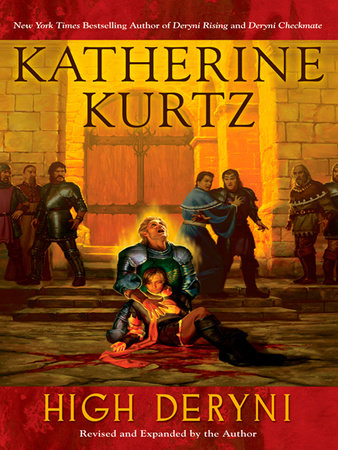Author Q&A
Interview with David Gemmell
Del Rey: Ravenheart is the third book of your Rigante series, following Sword in the Storm
and Midnight Falcon. One of the distinctive characteristics of this series is that it spans
a lot of time; decades pass between Sword and Falcon, and hundreds of years between
Falcon and Ravenheart. It’s as though you’re writing not just the stories of individual men and women,
but of an entire people.
David Gemmell: I tend not to have a master plan when I set out to create
a novel. When I began Sword in the Storm I was not even aware that it
WAS going to be part of a series. Initially it was just the story of a
man who would change his people’s destiny. Then I began to be fascinated
by how thatman’s actions would be interpreted by–and affect–history.
Every action we take begins a chain of events which will continue down
the centuries, endlessly moving outwards. A man a thousand years ago
saves a child from a swollen river. The child, who might have died, has
children of his own, and they go on to have families. Eventually one of
the descendants becomes a George Washington or an Abraham Lincoln. The
entire formation and philosophy of the United States might be due to one
man lifting a child from the water.
DR: How far do you plan on taking this series?
DG: I have no idea. Ravenheart was originally planned to be the last,
but the story kept growing. Now I am writing the sequel, Stormrider, and
I feel it is likely to be the last Rigante novel. But who knows? In a
year’s time I might wake up one morning with a new Rigante idea.
DR: The story of the Rigante is fiction, yet I can’t help feeling you’ve
drawn on a the history of our world–specifically, on the history and
the mythology of the Scots. Is that a subject close to your heart?
DG: I am of Scottish descent, and I have always had a soft spot for the
stories of Rob Roy and the various rebellions. I guess I feel at home
writing about the clans, their cameraderie and their love of the land. I
also like the stubborn courage shown by the highlanders through
centuries of betrayals and defeats. Despite all they suffered they
remained unconquered, and always ready to rise up against impossible
odds.
DR: Because the story you’re telling extends over centuries, we readers
get to see history become legend, and legend turn into myth. It’s
fascinating to watch how the Rigante shape their myths, and are in turn
shaped by them . . . for good and ill. And not just the Rigante, of
course.
DG: All societies are shaped by myths and legends. And all societies
steal the myths and legends of others. There is a need in us to feel
part of a greater whole.
DR: Magic is almost always the central feature of fantasies, and those
possessing magical abilities–witches or wizards or what have you–are
among the most powerful figures. But that doesn’t seem to be the case
in the world of the Rigante. I wonder if you could talk a bit about
your attitude to magic in these books and as a fantasy writer generally,
and how that attitude may have evolved over the years.
DG: The magic I write about is very real. I have seen it and experienced
it. In my novels I elaborate and exaggerate it. I once knew a man with a
talent for curing headaches. He didn’t know how he did it. He just
discovered one day that if he laid his hand on the head of someone
suffering a migraine the migraine would vanish. I was very sceptical–
until the day I had a migraine and he just cured it with a touch. There
is magic all around us, and we see it every day. Sadly we rarely
understand what we have seen, so we try to rationalise it. A long time
ago, as a journalist, one of my news contacts was a faith healer. He ran
a Spiritual Centre in London. One day I picked up a sporting injury–a
severely ricked neck. I spent three hours at the local hospital and was
fitted with a neck brace. I was told the injury would heal in around
three weeks – as long as I kept the brace on and allowed the muscles to
heal. My editor was delighted with my injury. He said I should go and
see the faith healer – whom he referred to as ‘Looney Tunes’– in order
to expose the man as a fraud. I went to the man, who laid his hand on my
neck, and healed me in an instant. I was thunder struck. I went back to
the office. Did this little miracle open the editor’s eyes? Not a bit of
it. Since he knew the man was a fraud then I couldn’t really have had
the injury. I had obviously faked the ricked neck. So not only was the
man still a fraud, but I was now one also. There is magic in the world.
There is stupidity in the world. Sadly–in the main–the stupid get to
make the rules.
DR: The fairy folk, or Seidh, are the embodiments of magic. Even in the
age of Connavar, their power and presence are waning in the world. By
the time of Ravenheart, they have vanished almost completely, and the
Rigante have become a conquered people. Are these two circumstances
related?
DG: Yes, they are related–as will become clearer by the time
Stormrider is published.
DR: Ravenheart is the soul name of a young man called Kaelin Ring. What
are soul names–how do you get them, and what do they mean?
DG: Most ancient cultures understood the need for soul names–names
that would link a child to the land. Many of these people gave their
children two names, one to be used among strangers or enemies, the other
to be kept secret. There was a belief that knowledge of a name gave
enemies power over you. The Celts had such a belief, as did the Vikings,
the Hittites–and, in the last century–the Apaches. Many of the Apache
leaders–whose names we think we know –like Mangas Colorado and
Geronimo were not known by these names among their own people.
DR: I don’t want to give anything away, but readers of the first two
books will notice patterns repeating themselves with variations in this
one . . . especially a certain pattern involving Kaelin and another
young man by the name of Gaise Macon. Is that how you see history? And
what–or who–makes these patterns?
DG: I don’t want to give anything away either. I write for those with
eyes to see and ears to hear.
DR: After more than twenty novels, how do you stay inspired? How do you
keep from repeating yourself?
DG: I do repeat myself. All authors do. I stay inspired because I love
what I do, and I gain enormous pleasure from the books. That pleasure is
increased considerably by fans who enjoy them also. Repetition is not
the problem. There are only so many ways to describe a sword fight, or
to show why a man chooses to fight evil. The problems begin when the
passion and the love of the work begins to fade, when authors ‘churn
out’ novels to a set formula. I won’t do that. The day I stop loving and
caring about my stories, I shall just quit and take up gardening.
DR: The fantasy genre just seems to get more and more popular. Is it
that today’s fantasy writers are so much better than their predecessors,
or is something else at work?
DG: It’s not a question of better. Men like Fritz Leiber, Tolkien,
Dunsany and Robert E. Howard paved the way, and gave us something to aim
at. Stephen Donaldson, Michael Moorcock, Julian May and David Eddings
powered the genre forward. J.K. Rowling has added further impetus to
fantasy. These are exciting times, and I feel privileged to be a part of
them.
As to something else at work, yes, I believe there is. In the past we
always had what we perceived as real heroes to believe in. I grew up in
a world where Wyatt Earp was a legend, along with men like Wild Bill
Hickock, General Custer, Davy Crockett and Elliot Ness. Revisionist
history taught us that Earp was a mean-spirited crook and a pimp,
Hickock was a syphilitic psychopath, Custer a megalomaniac idiot,
Crockett a failed politician who went to Texas to rekindle his political
career, and Elliot Ness a sadly pathetic figure who took no part in the
bringing down of Al Capone. One by one all the supposedly real heroes of
history have been debunked. Societies need heroes. So we travel to
places where revisionists cannot dismantle the great. Conan, Gandalf the
Grey, Thomas Covenant, Elric of Melnibone and Druss the Legend remain
mighty and unconquered.



